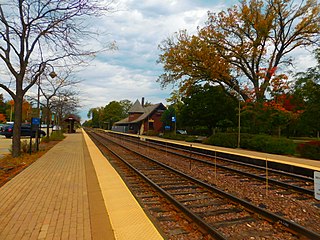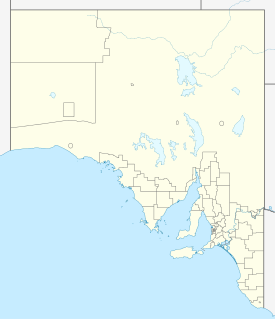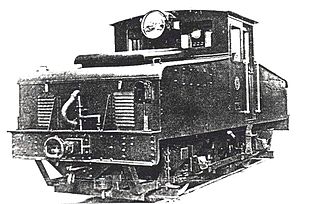Glencoe was a place name used by Scottish immigrants to name several places in the world. Glencoe may also refer to:

The village of Ballachulish in Lochaber, Highland, Scotland, is centred on former slate quarries. The name Ballachulish was more correctly applied to the area now called North Ballachulish, to the north of Loch Leven, but was usurped for the quarry villages at East Laroch and West Laroch, either side of the River Laroch, which were actually within Glencoe and South Ballachulish respectively.

Glencoe is situated in the Umzinyathi District, District of KwaZulu-Natal, South Africa.
Strathcona is a 19th-century variation of "Glen Coe", a river valley in Scotland. The word was invented for use in the title Baron Strathcona and Mount Royal, first used for Donald Smith, a Canadian railway financier, in order to avoid association with the Massacre of Glencoe of 1692.
Middlesex West was a federal electoral district represented in the House of Commons of Canada from 1867 to 1968. It was located in the province of Ontario. It was created by the British North America Act of 1867 which divided the County of Middlesex into three ridings: Middlesex North, Middlesex West and Middlesex East.

The Buffalo-Glencoe Tondas are a defunct Tier II Junior "A" ice hockey team that played in Buffalo, New York and later in Glencoe, Ontario, Canada. They played in the Southern Ontario Junior A Hockey League.

Ballachulish was a railway station at Ballachulish on the southern shore of Loch Leven at East Laroch in Highland.

Southwest Middlesex is a municipality in Middlesex County, Ontario, Canada.

Glencoe Station is a historic commuter railroad station along Metra's Union Pacific/North line in Glencoe, Illinois. It is officially located on 724 Green Bay Road, however it also runs parallel to Old Green Bay Road, both of which intersect with Park Avenue.

Malcolm Duncan Cameron was an Australian politician. He was a member of the Australian House of Representatives from 1922 to 1934, representing the electorate of Barker for the Liberal Party (1922–1925), Nationalist Party (1925–1931) and United Australia Party (1931–1934).

Glencoe is a village on the Northern Tablelands, New South Wales, Australia. It is part of the Glen Innes Severn Shire Council local government area. It has an elevation of about 1,150 metres (3,770 ft). At the 2016 census, Glencoe had a population of 192 people.

Glencoe railway station in Glencoe, Ontario, Canada is serviced by Via Rail trains operating between Toronto and Windsor. The station is wheelchair-accessible.

Glencoe is a town in South Australia, Australia, located 27 kilometres (17 mi) north-west of Mount Gambier. At June 2016, Glencoe had an estimated population of 661.
Nathaniel Currie (Curry) was elected MPP in the 1st Legislative Assembly of Ontario during the Confederation elections of 1867. Born of Irish immigrants in Chinguacousy, Upper Canada, the family farmed in the Glencoe area. His father, Nathaniel Currie Sn. petitioned for land in Mosa County, from York where he had originally petitioned for land in Upper Canada. Currie married Elizabeth Weeks in Mosa in 1845 having ten children together. He was buried in the Oakland Cemetery, Mosa, Row 11, no. 17 at age 74.
King's Highway 80, commonly referred to as Highway 80, was a provincially maintained highway in the Canadian province of Ontario. It travelled in an east–west direction south of Sarnia from Courtright to Strathburn. Beginning at the St. Clair Parkway near the shores of the St. Clair River, the route travelled 69.6 kilometres (43.2 mi), intersecting Highway 40, Highway 21 and Highway 79 before ending at Highway 2. In addition to the towns at either terminus, Highway 80 serviced the communities of Brigden, Glencoe and Alvinston. The entire route was and remains two lanes wide.

The South African Railways Class ES1 of 1924 was an electric locomotive.

Wandilo is a settlement in the Australian state of South Australia. It was named after the railway station on the Mount Gambier railway line, and is recorded to mean "a swamp where native companions resort".
The Mount Gambier railway line was a railway line on the South Australian Railways network. Opened in stages from 1881, it was built to narrow gauge and joined Mount Gambier railway station, which was at that time the eastern terminus of a line to Beachport. It connected at Naracoorte to another isolated narrow gauge line joining Naracoorte to Kingston SE, and to the broad gauge Adelaide-Wolseley line at Wolseley, at around the same time that was extended to Serviceton to become the South Australian part of the Melbourne–Adelaide railway. There has been regular calls for its standardisation between Wolseley and Heywood since its closure over the past two decades, which was complicated by the severing of the two lines in 2015 and being located in separate states.

Dismal Swamp is a locality in the Australian state of South Australia located about 361 kilometres (224 mi) south-east of the state capital of Adelaide and about 19 kilometres (12 mi) north-west of the municipal seat of Mount Gambier.










